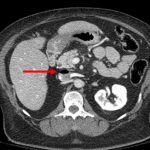Scoop and run vs stay and play are traditionally EMS concepts. Do I stay at the scene to perform invasive procedures, or do I perform the minimum I can and get to the nearest hospital?
For trauma patients time is the enemy and there is a different flavor of scoop and run vs stay and play. Do I take the patient to a nearby hospital that is not a high level trauma center to stay and play, or do I scoop and run to the nearest Level I or II center?
Admissions to a group of 8 trauma centers were analyzed over a 3 year period. A total of 1112 patients were studied. Patients were divided into two groups: those who were taken directly to a Level I trauma center (76%), and those who were transferred from another hospital (24%).
Patients who were taken to a non-trauma center first received 3 times more IV crystalloid, 12 times more blood, and were nearly 4 times more likely to die!
Obviously, the cause of this increased mortality cannot be determined from the data. The authors speculate that patients may undergo more aggressive resuscitation with crystalloid and blood at the outside hospital making them look better than they really are, and then they die. Alternatively, they may have been under-resuscitated at the outside hospital, making it more difficult to ensure survival at the trauma center.
Bottom line: this is an interesting paper, but there are a number of flaws that prevent us from mandating that all trauma patients should go directly to the trauma center. The authors never really define a “nontrauma hospital.” Does a Level III or IV center count? How did patients who stayed at the outside hospital do?
A lot of work needs to be done to add detail to this work. In the meantime, we have to trust our experienced prehospital providers to determine who really needs to go to the closest appropriate center, and what that really is.
Reference: Scoop and run to the trauma center or stay and play at the local hospital: hospital transfer’s effect on mortality. J Trauma 69(3):595-601, 2010.


